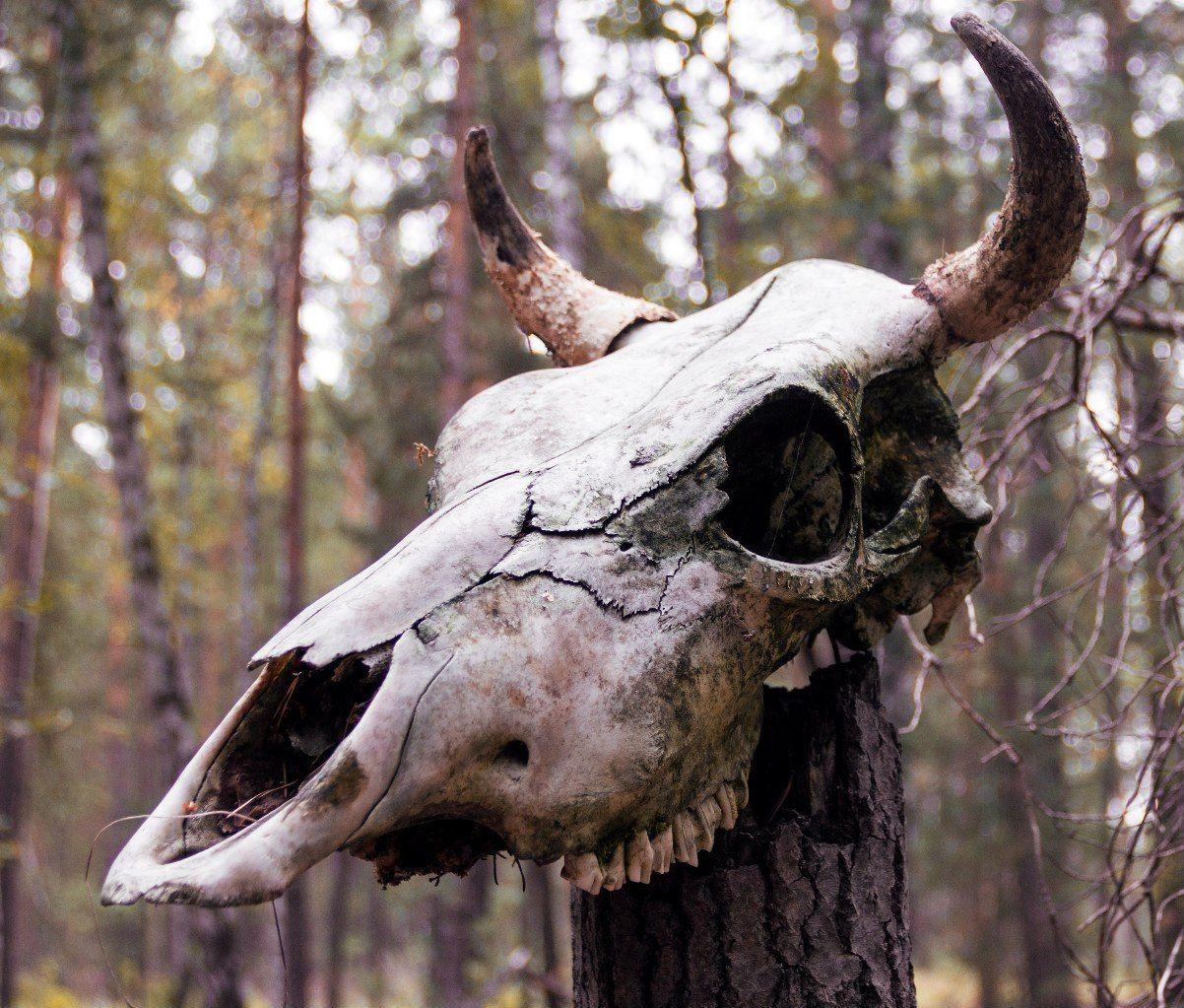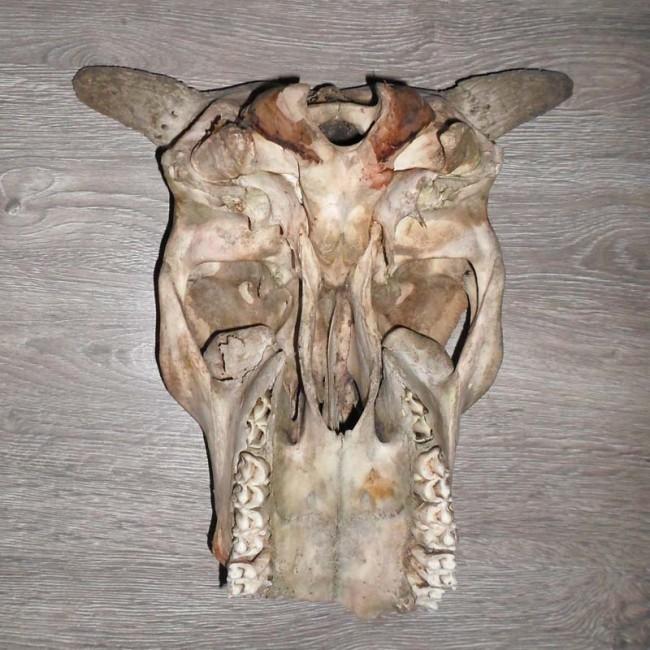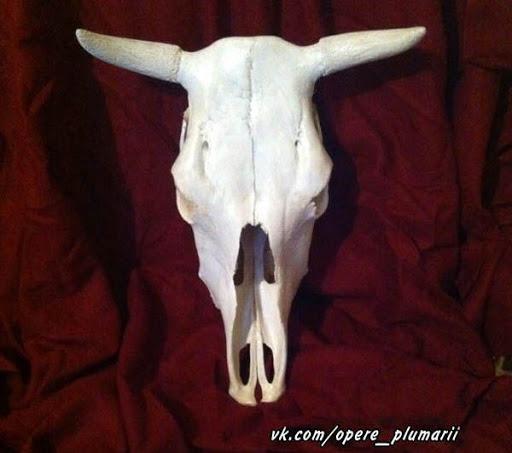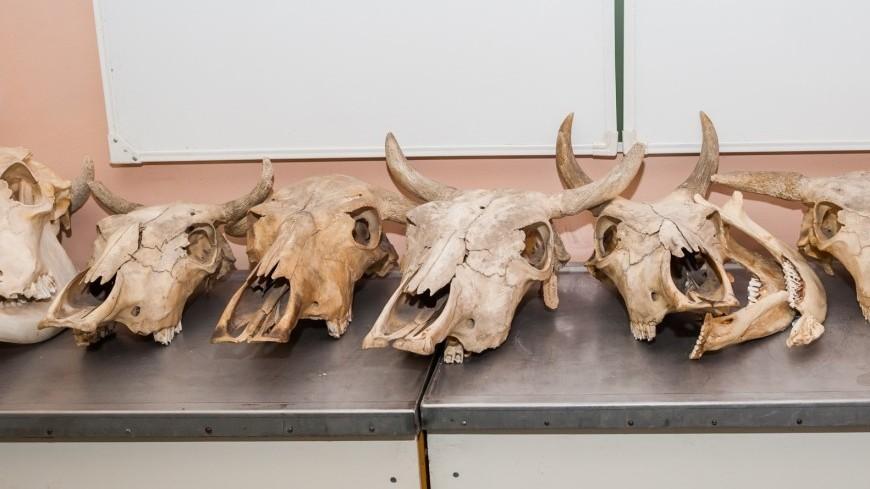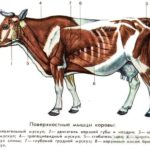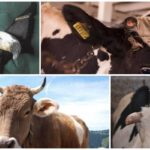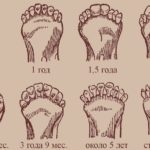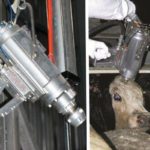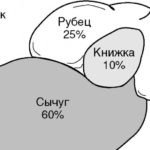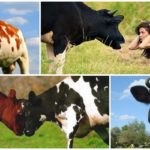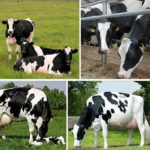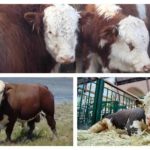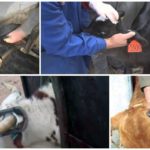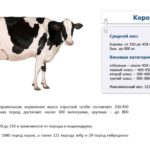In modern conditions, a livestock breeder needs to know the basic anatomy of his animals in order to understand the features and timeliness of their development. Such information helps to improve animal care and promptly detect diseases or congenital deformities. The patterns of modification of the calf’s skull and the condition of the cow’s head organs should be within the control of the owner.
Anatomy of a cow skull
The skeleton of the head is called the skull. For each animal, its structure and shape differ not only in size, but also in the configuration of individual parts.This is due to the animal's lifestyle and the functioning of each bone.
The cow's skull is formed by several large bones:
- frontal;
- parietal;
- occipital;
- temporal;
- upper and lower jaws.
Cattle (cattle) have a powerful frontal bone with horny processes (except for breeds or individual individuals with the polled feature). This bone in a bull is thicker and stronger than in a cow. The parts of the skull listed at the beginning of the list are single. The jaws are paired. Many smaller bones have a pair that is symmetrical on the sides of the cow’s muzzle, including:
- nasal;
- lacrimal;
- intermaxillary;
- palatal;
- zygomatic;
- superior and inferior turbinates;
- pterygoid.
In total, the cow has 7 skull bones in a single copy and 13 in double quantity. They form cavities in which the head organs work and create reliable protection for them.
As you grow older, muscles are added, and the connection between organs experiencing increasing stress and the large bones of the skull is strengthened. Thus, the masticatory muscles are fixed on the brain region. On the posterior upper edge of the cow's skull, between the horns, a frontal ridge forms. It is typical only for cattle. Thanks to him, the horned animal uses its weapon without fear for the integrity of its head. However, a strong blow to the upper third of the frontal bone leads to lightning death of a large ungulate.
What is the head made of?
The cow's skull, along with its ligaments, muscles and brain, is hidden under the skin and hair. The following organs are located on the visible part of the head.
Horns
The cows don't seem to need them. But in the wild, the female uses them to protect herself and her offspring. After all, even the structure of the cow’s digestive tract is designed in such a way as to store grass, quickly bite it in a dangerous place, and then, after burping, chew it well. In livestock breeding, horns only make females aggressive, they can ram the skin and injure the udder.
The shape of the horns is conical or helical, curved. They have processes of the frontal bone as their base. The top layer is a dense horny substance, thickened at the bends. The surface can be smooth, but transverse rings are often visible, reflecting the stages of horn growth.
After all, both bulls and cows consume various feeds throughout the year. Females have even more rings due to periods of pregnancy (pregnancy).
The weight of a pair of horns depends on body weight and breed, ranging from 700 g to 2.5 kg. But antlers up to a kilogram are more common. They are used in the haberdashery industry because they are easy to process. They are also used to make high-quality bone meal for animals, as they contain the strongest protein.
If the owner decides to remove the horns, then such an operation is recommended when they begin to grow. This is explained by the structure of aggressive processes. When they are injured or cut off, a lot of blood can be released.
Eyes
In the opening of the orbit of the skull there is an eyeball. It has the same structural elements as the visual organs of other animals. However, a cow sees its surroundings differently from a predator or a human. Cattle distinguish saturated colors, see worse during the day, and better at night (compared to humans).
Teeth and tongue
Cow teeth consist of incisors and molars. Their number depends on age and conditions of detention. Meat breeds complete their teeth faster than dairy breeds.
| Age | Number and type of teeth |
| Newborn | 4-6 primary incisors |
| 1 Week | 8 primary incisors |
| 2 years | 12 molars and 8 primary incisors |
| 5 years | 24 molars and 8 permanent incisors |
The upper jaw is wider than the lower jaw, and chewing occurs alternately with the left and right sides of the dentition. The cow's tongue is attached to the hyoid bone and lower jaw by muscles. Its back is rough, has a thickening (cushion) and taste buds. The tongue mixes food in the mouth, facilitating its good wetting with saliva.
Ears
They serve to perceive sounds and orient the body in space. The ear consists of:
- external auditory canal;
- middle and inner ear.
The outer shell is formed by flexible cartilage. Her skin is covered with short hair on the back and longer hair in the recess. The lubrication glands of the ear secrete wax. The shell picks up sound signals as a locator and directs them inside the ear structure, to the eardrum (a tight membrane 0.1 mm thick).
The middle ear consists of the malleus, incus, stapes, and ossicles, which transmit sound vibrations from the eardrum to the fluid of the inner ear. At the same time, they are able to amplify or weaken the sound. The inner ear contains balance receptors.
A cow picks up a much larger range of sounds than a person and most of the animals around him. She hears very low frequencies, and the cat has surpassed her in recognizing high frequencies.

